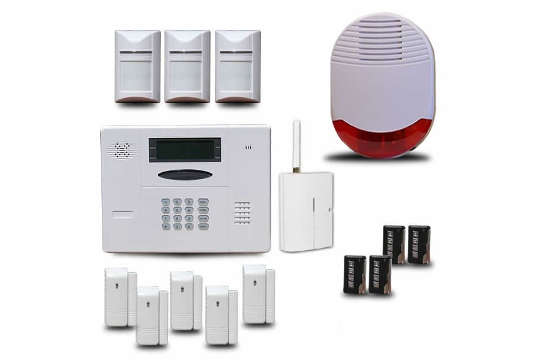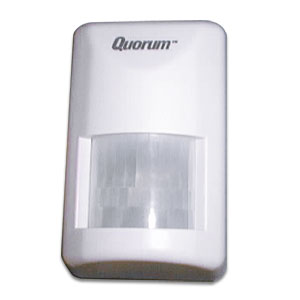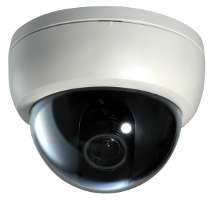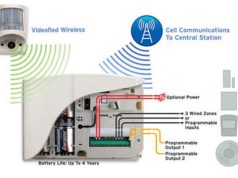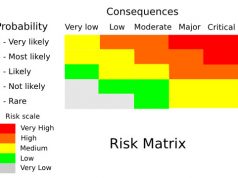Purpose of an alarm system
The alarm system purpose is to detect an intrusion inside a perimeter and alert the security force. The alarm system is sometimes called an intrusion detection system.
Without a good alarm system in place, the security force may never know that an intrusion has occurred. Or it may arrive too late to stop the intrusion and destruction/loss of assets …
Components of an alarm system
The system is built with at least 2 components. A sensor and an alarm.
The sensor’s task is to detect the intrusion and relay the information to the alarm, which alerts the security force.
Modern alarm systems have a third component, the control panel.
The control panel is the “brain” of the system. It can be connected to many kinds of sensors (infrared, glass breaks, magnetic switches …) and alerting mechanisms (siren, SMS, email, …).
The control panel can also turn on/off sensors and be configured to only send an alert if a certain number of sensors have detected an intrusion, in order to minimize false alarms.
Types of sensors
Infrared sensors (IR)
An infrared sensor measures infrared light radiating from people, animals, or any object.
This sensor is used as a “motion detector”.
There are two types of infrared sensors, passive and active.
Passive infrared sensors (PIR) do not emit any signal. The sensor detects movement by monitoring the change in thermal radiation inside a perimeter. They are usually installed indoors.
Since a human body typically emits more infrared radiation (heat) than other objects in a room, the sensor will detect a sudden spike of radiation when a person moves in its field of view.
High room temperatures will make the sensor less effective.
False alarms can be caused by animals, space heaters, ovens, hot water pipes, or any object that produces heat. Because of the sunlight, PIR should not be installed facing windows.
Active sensors emits modulated infrared waves. They work with a transmitter and a receiver. These sensors can be used outdoors to build invisible barriers that will trigger an alert when disrupted.
Ultrasonic sensors
Passive ultrasonic sensors listen to high frequency sound associated with hostile actions such as glass breaking, metal striking metal, brick shattering or the use of a cutting torch.
False alarms can be caused by construction work, some telephone rings, and HVAC.
Active ultrasonic sensors emit inaudible sound waves and work like a sonar. They are used as motion detectors.
Microwave sensors
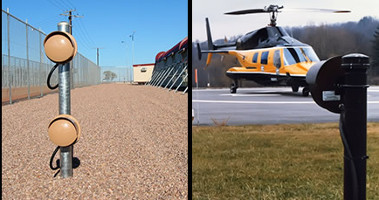 Microwave sensors use the Doppler effect to detect intruders.
Microwave sensors use the Doppler effect to detect intruders.
They work like a radar. A transmitter emits microwaves and a receiver detects frequency shifts.
There are two types of microwave sensors, monostatic and bistatic.
Monostatic sensors house both the transmitter and receiver in the same unit., they have a short detection range. Bistatic sensors are two separate units that can be used to build an invisible barrier over longer distances, along the outer perimeter fence for example.
Microwave can go through walls, windows and can also be reflected by objects, extending the detection coverage, causing false alarms. Fluorescent light bulbs are also a source of false alarms.
Dual Technology sensors
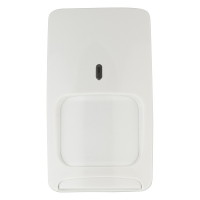 They are made of two different sensors in order to lower the rate of false alarms.
They are made of two different sensors in order to lower the rate of false alarms.
The most common ones combine a passive infrared sensor with a microwave one.
Glass breaks
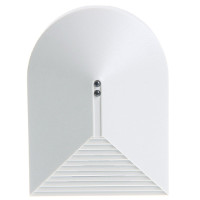 Glass break sensors alert when a window is broken.
Glass break sensors alert when a window is broken.
Acoustic glass breaks have a microphone that listens to specific frequencies associated with the sound of glass breaking.
Switches
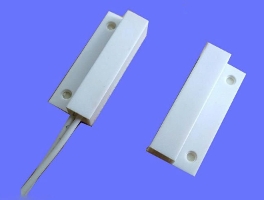 Switches are used to detect the opening of doors and windows.
Switches are used to detect the opening of doors and windows.
They are made of two parts. One is fixed to the door or window, the second on the frame.
When contact between the two parts is broken, an alert is sent.
Alarms
Once a sensor detects an intrusion, it sends a signal to the control panel. The panel then activates the alarm.
The following alerting mechanisms are available:
- Siren
- Strobe Light
- Phone call (Land line)
- Phone call (GSM)
- SMS
- MMS
Alarm monitoring
An alarm system is pretty much useless if no security force is available to respond to the alarm.
However before actions are taken to stop or counter the attack, the alarm must be assessed.
Is the cause of the alarm an intrusion or is it a false alarm ? Police departments estimate that over 95% of alarm calls they receive are false alarms …
Alarm monitoring companies can assess the alerts sent by your alarm system 24/7 for a monthly fee. They will call the police if necessary.
CCTV
A great tool for assessing alerts is CCTV (Closed Circuit Television).
When a sensor detects an intrusion and the area is monitored by CCTV, the security force or monitoring company can actually see if the sensor was triggered by an intruder.
Some cameras also have a motion detection capability, giving you another sensor …

























